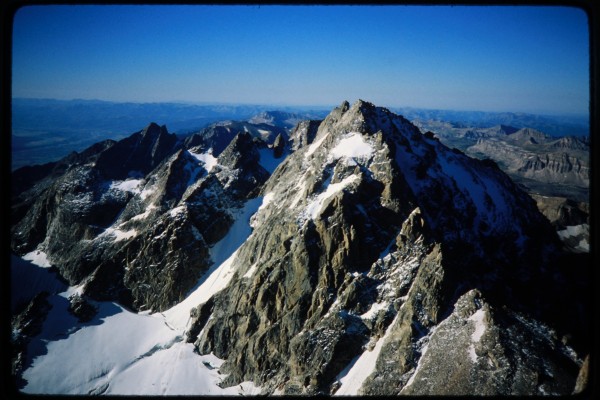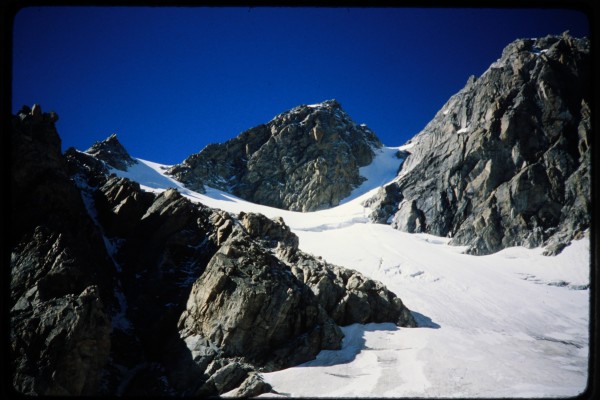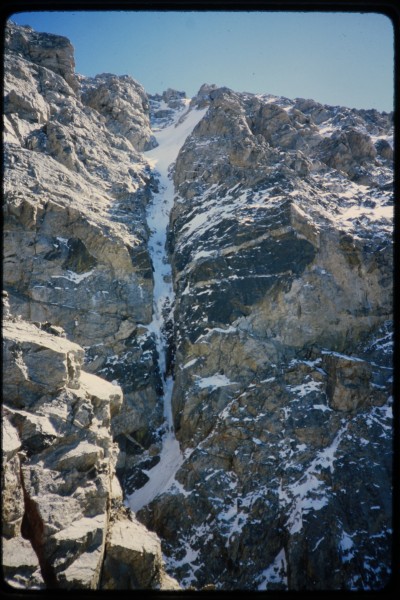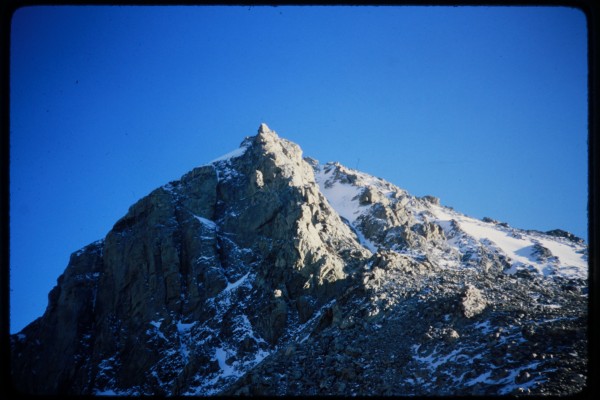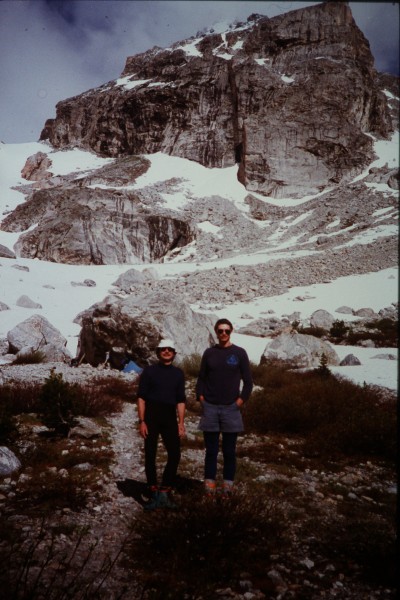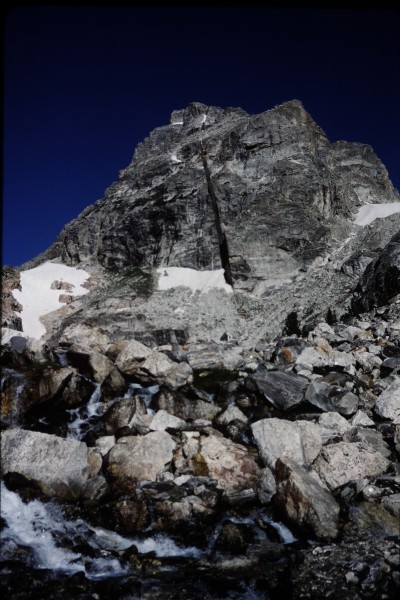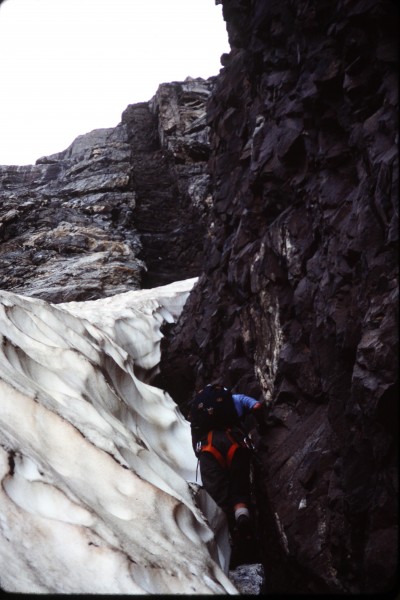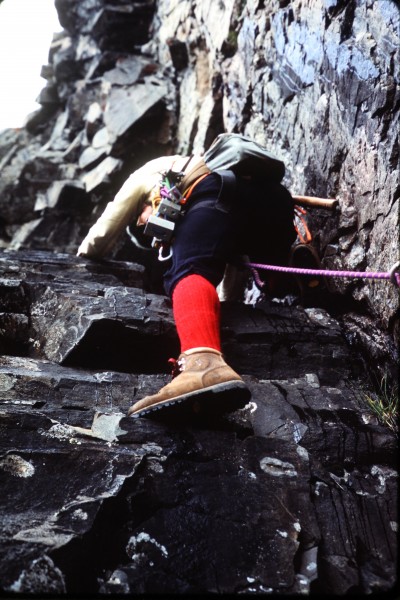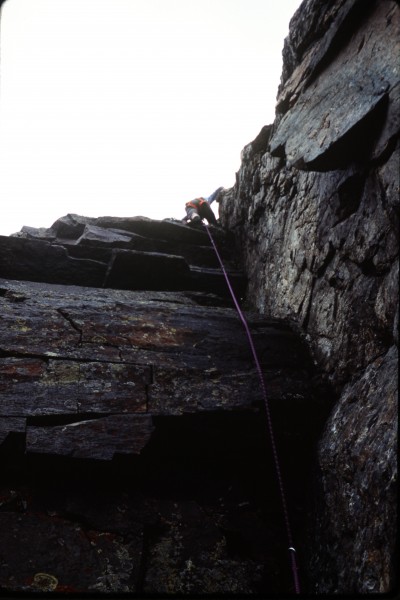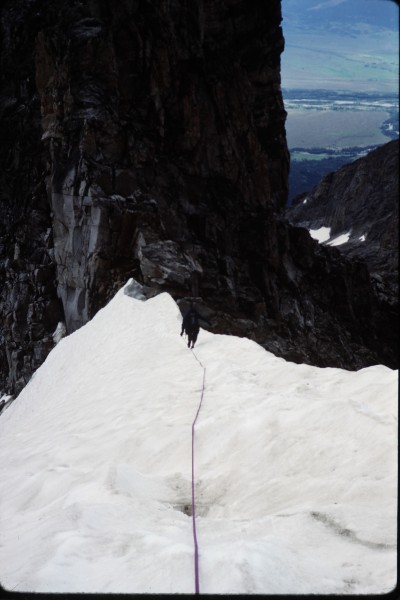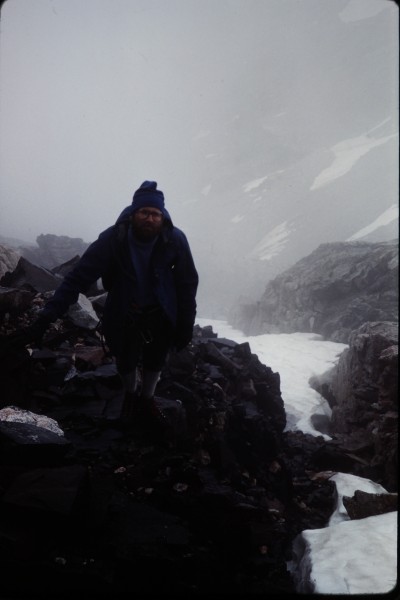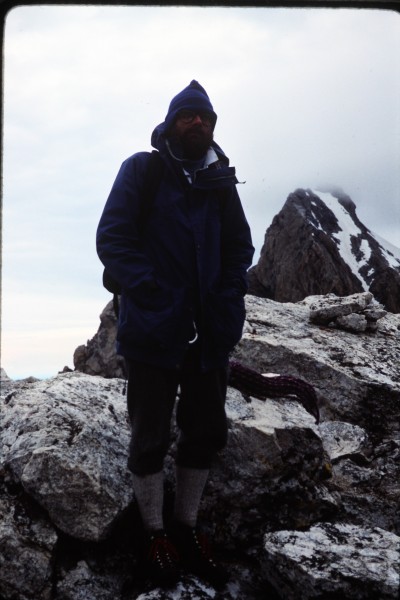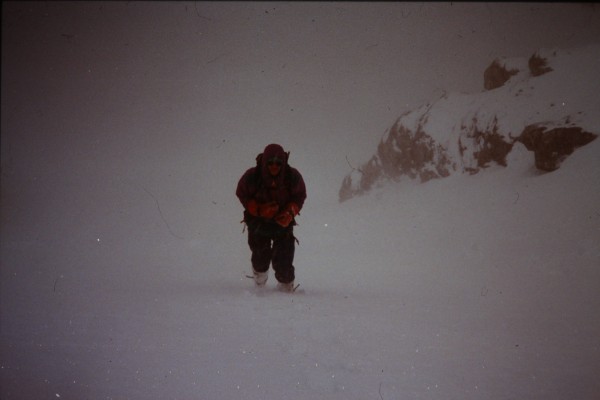My first date with this lovely mountain occurred late summer of 1973 when a climbing partner from Colorado Springs finagled a ride for us to Idaho Falls on a moving van if we helped unload the moving van. From there it was a short hitchhike over Teton Pass and a stroll up into Garnet Canyon. After the required newbies epic on the Grand we headed over to the northwest couloir on the Middle. It was a bluebird sky day and the ice itself glistened light blue and shiny, smooth and cold to the touch, vaulting upward into the sky at 60o for many hundreds of feet. No route finding issues here like the ones that had so recently vexed us on the Grand, just a clear blue highway of ice to the summit. I was so smitten. Although this was only the second time I had ever climbed ice and half my equipment was borrowed, I wanted to have her first and my partner graciously gave me the lead. So we ran it out pitch after pitch with one screw midway and another for the belay for hundreds of feet. After about four pitches of bliss and only one pitch from the top I broke the tip off my borrowed Chouinard “Zero” axe right at the last tooth in the serrated point. Well, that’s certainly less than optimal! Good thing my antediluvian hinged Stubai crampons are made of sterner stuff. (Seriously, I think those cramps were army surplus from the Wehrmacht alpine troops who fought in the Caucasus in 1942.) My partner graciously led that last pitch to the summit while I followed along with just my alpine hammer (which I would break some years later on another ice climb – different story though). That very first summit day on Middle Teton left me smitten for life, both with the Middle Teton and with ice climbing – face it, I was damaged goods from that point forward.
John Ferguson and I would return to the Tetons every three or four years throughout the 1980’s and 1990’s and would always schedule time for Middle Teton. On our first trip we could not refrain from doing the dike route, which stared down at us in our camp and taunted us into making a commitment.
To get to the start of this climb we needed to deal with the snowfield and wannabe bergschrund at the base of the east face. Since we were wannabe alpinists, we were perfectly equipped to deal with the wannabe ‘shrund. Actually, this allowed us to indulge in our latent Walter Bonatti fantasies pretending we were real alpinists doing real alpiny things (Take THAT virtual reality glasses). Beyond the ‘shrund the black dike was awesome climbing at an easy grade (probably 5.5 or 5.6). We swung leads going up the dike because that’s what gentlemen do, they share the good stuff. Although these pitches start out fairly easy and get easier as they angle off higher up, there are a bunch of them and it was good to make progress. By and by we surmounted the dike pinnacle and descended down to the notch betwixt us and the main summit. Fortunately we were wearing the right footgear for crossing the narrow snow ridge. Unfortunately the only ice gear we had for safely crossing this was my alpine hammer, which was about as useful as teats on a boar. If one of us slipped the other one was gonna hafta just jump down the opposite side, but it didn’t come to that. After a suitably alpiny scramble up to the summit we enjoyed watching the weather debate with itself about what it was going to do for the day. Another requited tryst was in the bag.
Over the intervening years John and I would go back to do the Ellingwood Couloir, the Chouinard Ridge, and the Southeast Ridge, all routes on the south side of Middle Teton. Each of these routes provided good wholesome mountaineering content, each in its own way. For the Southeast Ridge route (5.7 or so) we approached in running shoes and changed into rock shoes for the climb itself. The rock climbing portion of this day was just a total hoot. However, getting to the rock across the hard snow in the couloir at the base of the climb while wearing running shoes was the first crux of the day and felt a bit sketchy at times. At the top of the rock climb we once again faced crossing the snow ridge in slick-soled rock shoes with no ice axes in hand. This was undoubtedly the psychological crux of that route for us. Spooky is the technical term that describes it best and we ended up straddling the snow for the last 10 feet of the traverse. The day we did the Chouinard Ridge was one of those moody, cloudy days where bipolar weather toys with the emotions, although it never really did us wrong. This time we were shod with appropriate footwear, armed with ice axes, and the traverse to the summit block was no big deal. Yes, they CAN be taught! The year we did the Ellingwood Couloir was the Teton year of no summer. It was July and it snowed on us, a lot! The weather wasn’t bipolar, it was just polar. I have summited 14’ers in Colorado in the middle of winter in better weather than we had on the Middle that day in July. Still, it was a full value day on the mountain. There is just something about couloirs that feels so righteous, like we are manly men doing manly things in a manly environment (with appropriate apologies to the many women mountaineers who can well and truly put my butt on the bus). Value was added by the descent down the glacier route. With so much snow and so little visibility it made no sense to us to do the scramble across the saddle and up the summit block, so we didn’t. However, stepping over the side of that saddle in steep deep snow to start our descent was spookier than anything we had confronted ascending the Ellingwood Couloir. Once over the edge and committed to the descent we were once again in our alpine happy place.
I was never forsaken by the Middle Teton, it has always been faithful to me and ever mindful of my needs. It never judged even when it was moody. I doubt that it will think ill of me when, in my dotage, I appear less often and pay less attention to it. That being said, the Middle Teton will always be near and dear to my heart.
